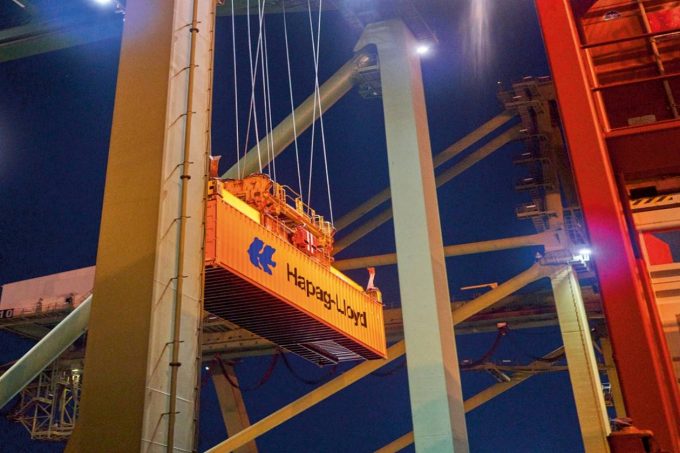More blanked voyages expected as carrier efforts to drive up rates falter
Container spot rates were largely unchanged for a third consecutive week, as it became evident ...
UPS: MULTI-MILLION PENALTY FOR UNFAIR EARNINGS DISCLOSUREWTC: PUNISHEDVW: UNDER PRESSUREKNIN: APAC LEADERSHIP WATCHZIM: TAKING PROFITPEP: MINOR HOLDINGS CONSOLIDATIONDHL: GREEN DEALBA: WIND OF CHANGEMAERSK: BULLISH CALLXPO: HEDGE FUNDS ENGINEF: CHOPPING BOARDWTC: NEW RECORDZIM: BALANCE SHEET IN CHECKZIM: SURGING
UPS: MULTI-MILLION PENALTY FOR UNFAIR EARNINGS DISCLOSUREWTC: PUNISHEDVW: UNDER PRESSUREKNIN: APAC LEADERSHIP WATCHZIM: TAKING PROFITPEP: MINOR HOLDINGS CONSOLIDATIONDHL: GREEN DEALBA: WIND OF CHANGEMAERSK: BULLISH CALLXPO: HEDGE FUNDS ENGINEF: CHOPPING BOARDWTC: NEW RECORDZIM: BALANCE SHEET IN CHECKZIM: SURGING

On the back of rocketing spot freight rates, Hapag-Lloyd today upped its 2024 financial guidance after releasing unaudited first-half results.
The Hamburg-headquartered carrier issued an ad hoc advisory to the Frankfurt Stock Exchange saying it had raised its earnings outlook, “based on preliminary and unaudited figures” for the first half of the year which saw it achieve a group Ebitda of around €1.8bn and a group Ebit of €800m.
These compare with recorded 2023 half-year group Ebitda of €3.5bn and group Ebit of €2.6bn.
“Because recent strong demand and increased short-term freight rates have exceeded expectations, earnings momentum for the second half of the year is likely to be above previous expectations,” the company said in its stock exchange announcement.
But it added: “Against the backdrop of very volatile freight rates and major geopolitical challenges, the forecast is subject to a high degree of uncertainty.”
Its previous full-year group Ebitda forecast was €2bn to €3bn, and full-year group Ebit was between zero and €1bn.
Its audited first-half results for 2024 are due on 14 August.
Despite, the increase, some analysts have questioned why the German carrier was not more bullish in its outlook, given the way spot rates have behaved over the past three months, particularly on the Asia-Europe and transpacific routes.
“It will come as no surprise that carriers are revising their financial expectations upwards, though observers might have expected an even greater uplift from Q1 to Q2,” Alphaliner wrote today.
“The higher forecast was mainly due to earnings momentum for the second half of the year,” it added.
According to the latest Freightos FBX index, out yesterday, spot rates out of Asia “climbed significantly last week”, with the latest daily prices already at $8,200 per 40ft to North America west coast; $9,300 per 40ft to the east coast; $8,600 per 40ft to North Europe; and $7,900 per 40ft to the Mediterranean.
“Peak season demand coinciding with Red Sea-driven capacity constraints and congestion has now pushed Asia-North America west coast spot rates 60% higher than their February peak, and prices to North Europe are 80% higher than highs seen in January,” added Freightos lead analyst Judah Levine.
Comment on this article